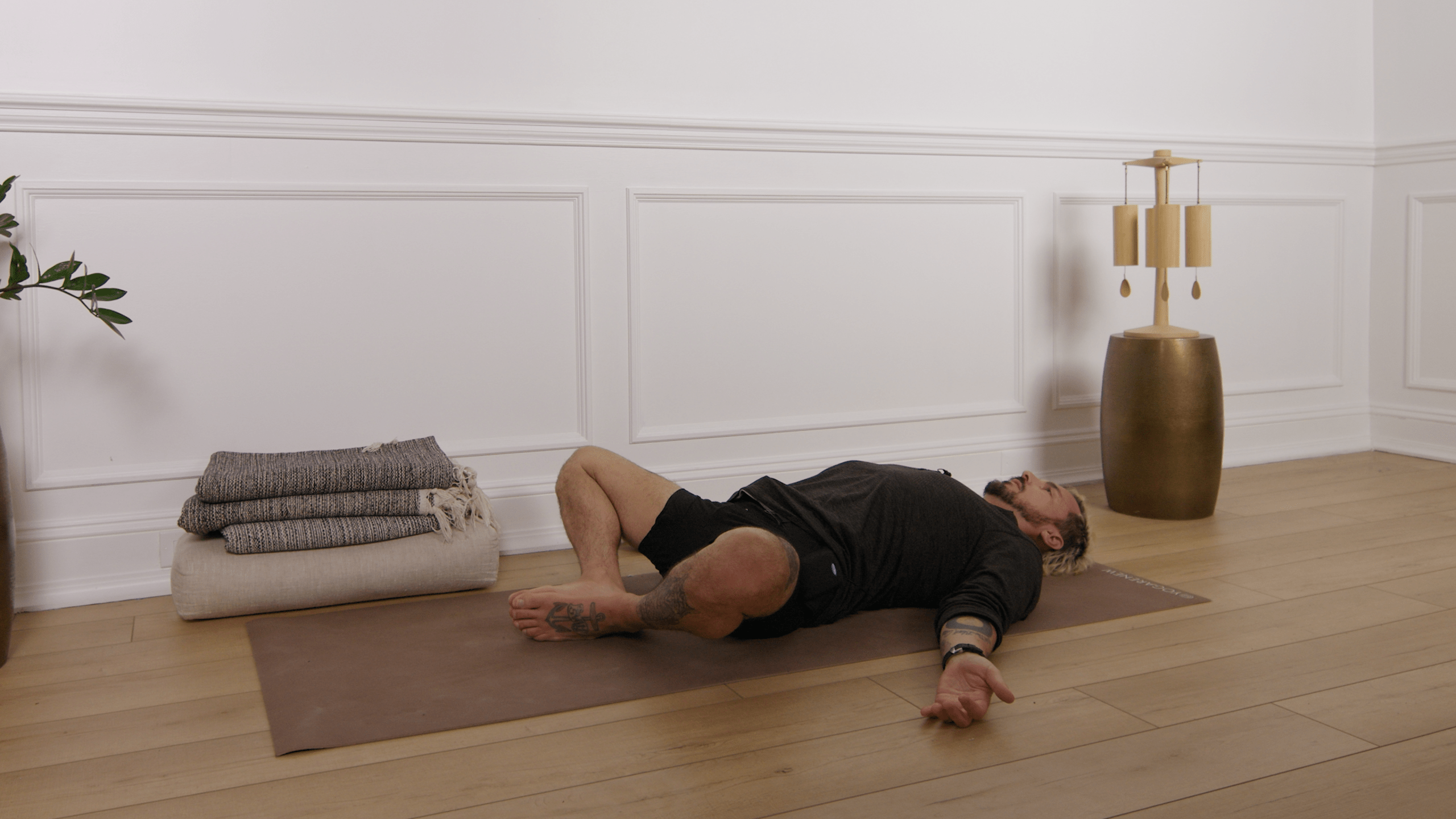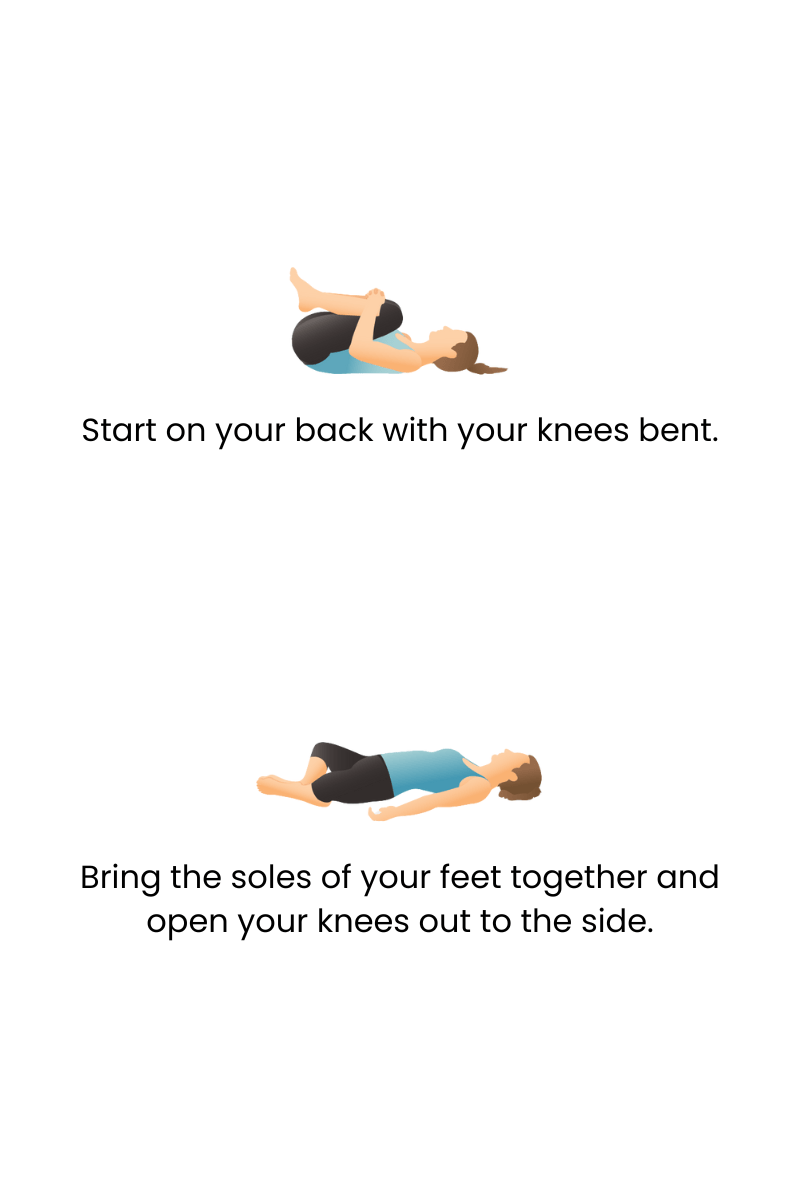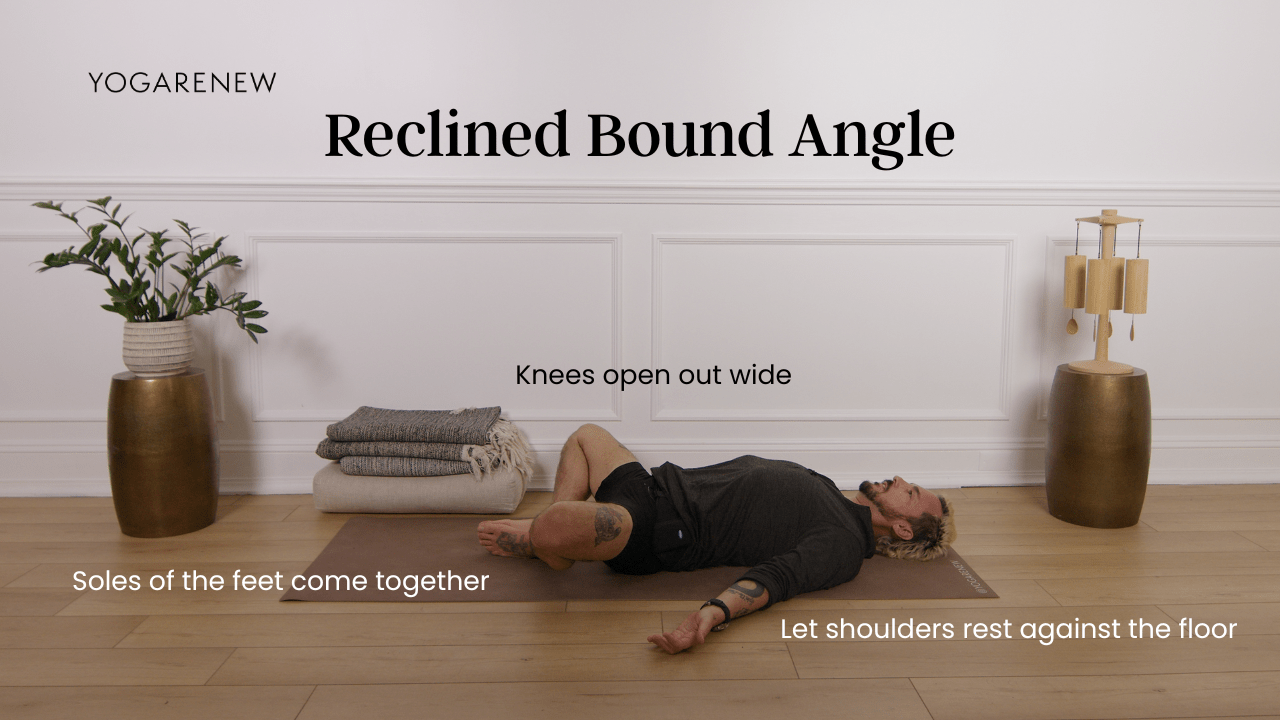What is Reclined Bound Angle?
English Name: Reclined Bound Angle Pose
Sanskrit Name: Supta Baddha Konasana (pronounced SOOP-tah BAH-dah cone-AHS-uh-nuh)
Category: Foundational, Restorative, Hip Opener, Beginner

English Name: Reclined Bound Angle Pose
Sanskrit Name: Supta Baddha Konasana (pronounced SOOP-tah BAH-dah cone-AHS-uh-nuh)
Category: Foundational, Restorative, Hip Opener, Beginner
Reclined Bound Angle Pose, or Supta Baddha Konasana, is a deeply restorative posture that gently opens the hips, inner thighs, and chest while promoting relaxation and introspection. Practiced lying on the back with the soles of the feet together and knees splayed open, this pose encourages a soft release through the groin and belly, while calming the nervous system and deepening the breath.
A staple in Yin, Restorative, and gentle yoga styles, this pose provides grounding and passive flexibility. It’s often used during warm-ups, cool-downs, or relaxation-focused practices.


Supta Baddha Konasana is a deeply nourishing pose that supports emotional well-being, physical recovery, and mindful stillness. Whether used in restorative practice or as a meditative pause during an active sequence, this posture invites surrender, openness, and inner quiet. It offers a gentle counterbalance to daily stress, helping you reconnect with the breath, body, and subtle sensations.
Yes—use plenty of props under your thighs to ensure comfort and safety.
It can be both. With props and stillness, it’s restorative. Without support, it may offer a gentle active stretch.
Anywhere from 1 to 10 minutes, depending on comfort and purpose. Restorative holds are typically longer.
Your New Favorite Yoga App. For Free.